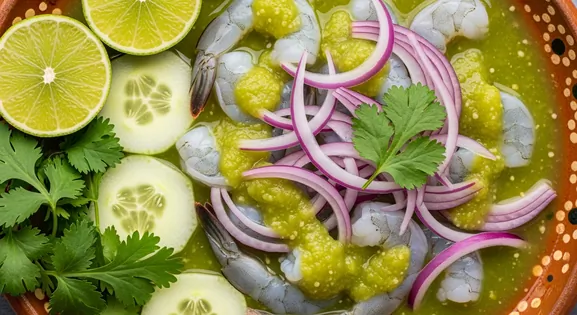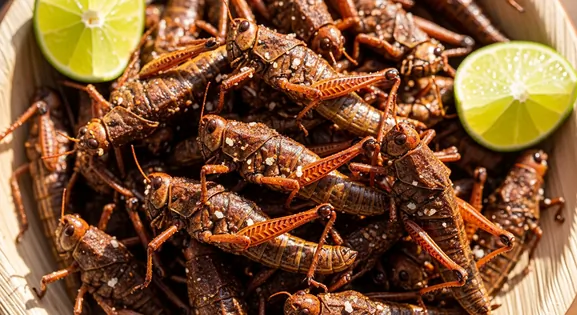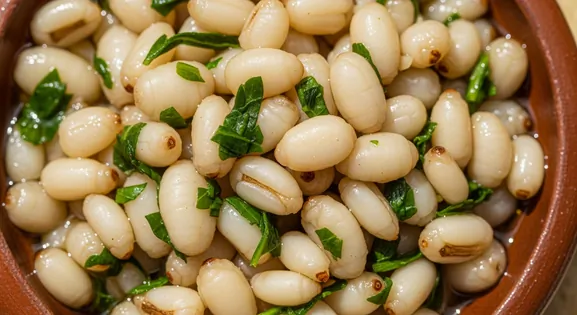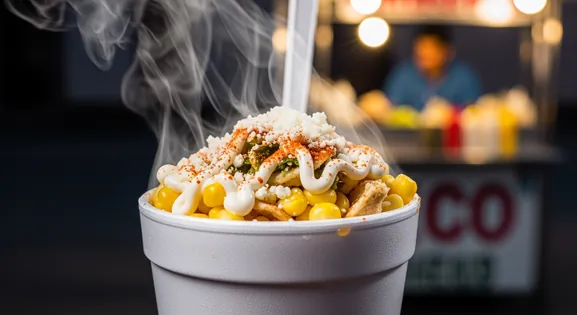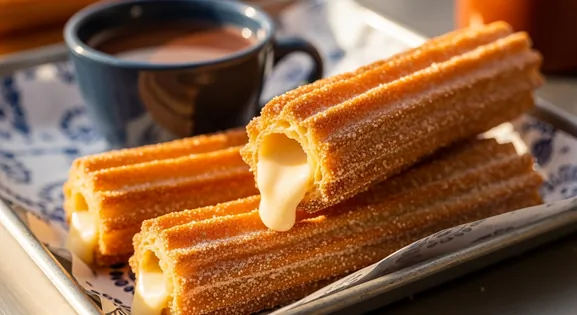Chiles en Nogada in Mexico City
Chiles en Nogada
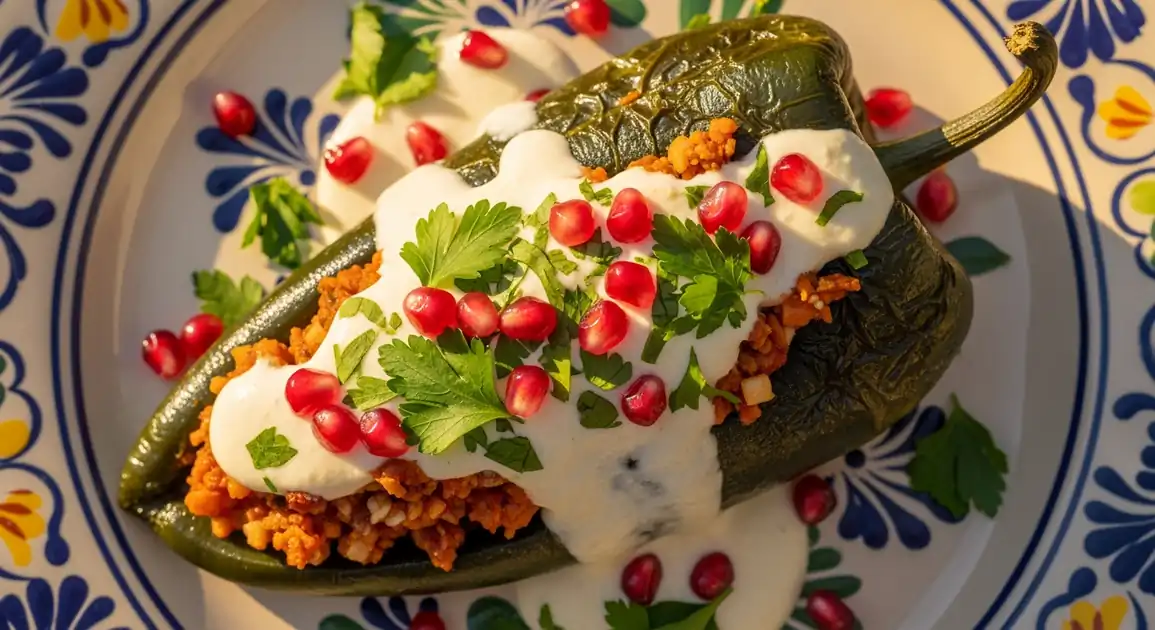
A Guide to the Local Experience
As the vibrant green, white, and red hues of Chiles en Nogada appear across Mexico City, you know autumn is near. This iconic dish, a symbol of Mexican independence, transforms the capital's dining scene into a patriotic culinary celebration. Find your perfect plate here.
New to Chiles en Nogada? Learn all about its history in our complete guide.
Traditions and Etiquette
Local Significance
In Mexico City, Chiles en Nogada represents both patriotic tradition and culinary sophistication. The capital's cosmopolitan nature means the dish often receives creative interpretations while maintaining its cultural significance. Food critics and publications often review and rank the city's best offerings each season.
Eating Customs
- In Mexico City's upscale establishments, the dish might be preceded by a small appetizer or amuse-bouche.
- Pairing with Mexican wines (particularly whites from Valle de Guadalupe) is increasingly common.
- Photographing the dish for social media is an accepted modern custom before eating.
A Look at Local Preparations
Chef's Interpretation
Mexico City is known for creative chef-driven versions that might include molecular gastronomy techniques or unexpected ingredients while respecting traditional flavors.
Luxury Variations
Some high-end restaurants offer premium versions with costly additions like truffle, aged cheeses, or specialty meat in the picadillo.
Health-Conscious Adaptations
Given the city's contemporary dining scene, lighter versions with reduced cream or healthier ingredients are available in certain restaurants.
Vegan Options
Mexico City leads in plant-based adaptations, with specialized restaurants offering fully vegan versions that maintain the dish's essence.
Unlocking the Secrets of a Great Meal
During August and September, especially around Independence Day, top restaurants in Polanco or Roma fill up fast. Make reservations weeks in advance.
Many high-end restaurants, like those in Condesa, offer special tasting menus featuring Chiles en Nogada with unique pairings or complementary dishes.
For a more casual, authentic experience, check out a local market like Mercado de San Juan, where some stalls might offer homemade versions during the season.
Navigating the City for Great Chiles en Nogada
Polanco
Upscale neighborhood with some of the city's most renowned Mexican restaurants offering premium versions.
Avenida Presidente Masaryk, Museo Soumaya, Parque Lincoln
Lunch (2 PM - 4 PM), Dinner (8 PM - 10 PM)
Roma/Condesa
Trendy neighborhoods with both traditional and contemporary Mexican restaurants, many offering creative interpretations.
Parque México, Glorieta de Cibeles, Fuente de Cibeles
Lunch (2 PM - 5 PM), Dinner (7 PM - 10 PM)
Centro Histórico
Historic center with established restaurants serving classic versions, often in colonial buildings.
Zócalo, Palacio de Bellas Artes, Templo Mayor, Alameda Central
Lunch (1 PM - 4 PM)
Coyoacán
Cultural district with traditional restaurants where families gather for celebratory meals.
Jardín Centenario, Mercado de Coyoacán, Casa Azul (Frida Kahlo Museum)
Weekend Afternoons (2 PM - 6 PM)
Vendor Tips
- Reservations are strongly recommended during peak season, especially at renowned restaurants.
- Ask if the restaurant has a special Chiles en Nogada tasting menu or Independence Day package.
- Some Mexico City restaurants hold annual Chiles en Nogada festivals with special events and variations.
- High-end restaurants often source ingredients from specific regions known for quality (e.g., Puebla walnuts).
A Traveler's Checklist
What to Look For
-
Reputable restaurants with a focus on traditional or upscale Mexican cuisine
This complex dish requires careful preparation; avoid casual street vendors or questionable eateries.
-
Served only during the traditional season (approx. late July to late September)
Year-round availability suggests frozen ingredients or shortcuts, potentially compromising safety and quality.
-
Nogada sauce looks fresh, white/ivory, creamy, and is served cool
The walnut cream sauce is perishable; it should be properly chilled and show no signs of grayness or separation.
-
Fresh pomegranate seeds and parsley garnish
Indicates attention to detail and fresh assembly.
What to avoid
-
Street vendors or very cheap eateries offering the dish
High risk due to complexity and perishable ingredients (meat, dairy sauce).
-
Being offered the dish significantly outside the August-September season
Likely uses non-traditional or lower-quality ingredients.
-
Nogada sauce that looks yellowish, grayish, watery, or warm
Clear signs of potential spoilage or improper handling.
Practical Details for Enjoying Chiles en Nogada
Dietary Information
Important Note for Travelers: Your safety is our priority. Below are the common allergens associated with the traditional preparation of this dish. However, recipes and ingredients can vary significantly between establishments. Always confirm all ingredients directly with the food vendor before ordering, especially if you have a severe allergy.
Potential Allergens
Dietary Suitability
Price Guide
Budget Tips
- High-end restaurants in Polanco or Condesa typically charge 450-700 MXN.
- Mid-range options in Roma or Centro Histórico range from 350-450 MXN.
- Markets like Mercado de San Juan might offer more affordable versions (280-350 MXN).
- Some restaurants offer a chile en nogada as part of a fixed-price Independence Day menu.
Serving & Seasonality
In Mexico City, presentation tends to be more elaborate than in other regions. Often served on decorative plateware, sometimes with creative plating techniques while maintaining the classic components. Higher-end restaurants might serve it with a complementary appetizer or palate cleanser.Best Times to Enjoy
- Lunch: The traditional main meal time (comida) from 2 PM - 5 PM is ideal.
- Weekend Brunch: Many upscale restaurants feature it during weekend brunch services in season.
- Dinner: Appropriate for dinner, especially for celebrations or special occasions (7 PM - 10 PM).
Seasonal Availability
Available late July through late September, with peak availability and quality in late August through mid-September.
A Simple Guide to Ordering
When ordering Chiles en Nogada in Mexico City, don't hesitate to ask your server about the origin of their ingredients, especially the walnuts and pomegranates. Many establishments pride themselves on sourcing from Puebla. In upscale venues, it's common to pair it with a crisp Mexican white wine. For a truly local experience, inquire if they offer a "degustación" (tasting) menu that includes the dish, allowing you to sample other seasonal specialties.
Getting the Most Out of Your Meal
Experiencing Chiles en Nogada Season in Mexico City
Learn how to fully immerse yourself in Mexico City's vibrant Chiles en Nogada season, from finding the best spots to appreciating its cultural significance.
- Plan your visit between late July and late September for peak availability and quality.
- Research restaurants known for authentic Mexican cuisine (both traditional and modern interpretations). Check reviews or seasonal menus online.
- Make reservations, especially at popular restaurants, as it's a highly sought-after dish.
- Understand the flavor profile: sweet picadillo filling, creamy walnut sauce, slightly bitter chile, fresh pomegranate burst.
- Appreciate the presentation representing the Mexican flag colors.
Navigating Mexico City's Culinary Districts for Chiles en Nogada
Discover how to navigate Mexico City's diverse culinary districts to find the perfect Chiles en Nogada experience, from upscale dining to traditional eateries.
- Identify your preferred dining style: high-end in Polanco/Roma, traditional in Centro Histórico/Coyoacán, or market-style.
- Use local food blogs and seasonal restaurant guides to pinpoint top recommendations in each district.
- Consider joining a specialized food tour during the season for curated experiences and insider access.
- Be prepared for varying price points and atmospheres depending on the neighborhood you choose.
Our Commitment to Quality
At Tasteplorers, our mission is to provide the most accurate and useful travel information in the world. To achieve this, all content on this site is created through our unique editorial framework. We utilize leading AI research tools, guided by our proprietary prompts, and a multi-stage validation process. This entire system is overseen by our editorial team to ensure everything we publish meets our high standards for accuracy, cultural nuance, and practical value for travelers.
Learn more about our Editorial Process and our Mission.
Explore regions
Europe
Discover Europe's diverse culinary landscape, from Mediterranean flavors to hearty Alpine fare. Learn to navigate markets, decode menus, and eat like a local.
Latin America & Caribbean
Discover the vibrant cuisines of Latin America & the Caribbean. Our expert guide covers everything from Mexican street food to Peruvian ceviche and market tips.
Oceania
Explore Oceania's diverse food scene. Learn about Polynesian earth ovens, Fijian feasts, and the vibrant café culture of Australia and New Zealand.
Southeast Asia
Explore Southeast Asia's diverse food cultures from Thailand to Vietnam. Get expert tips on navigating spice levels, choosing quality vendors, and understanding the rich traditions of the region.
